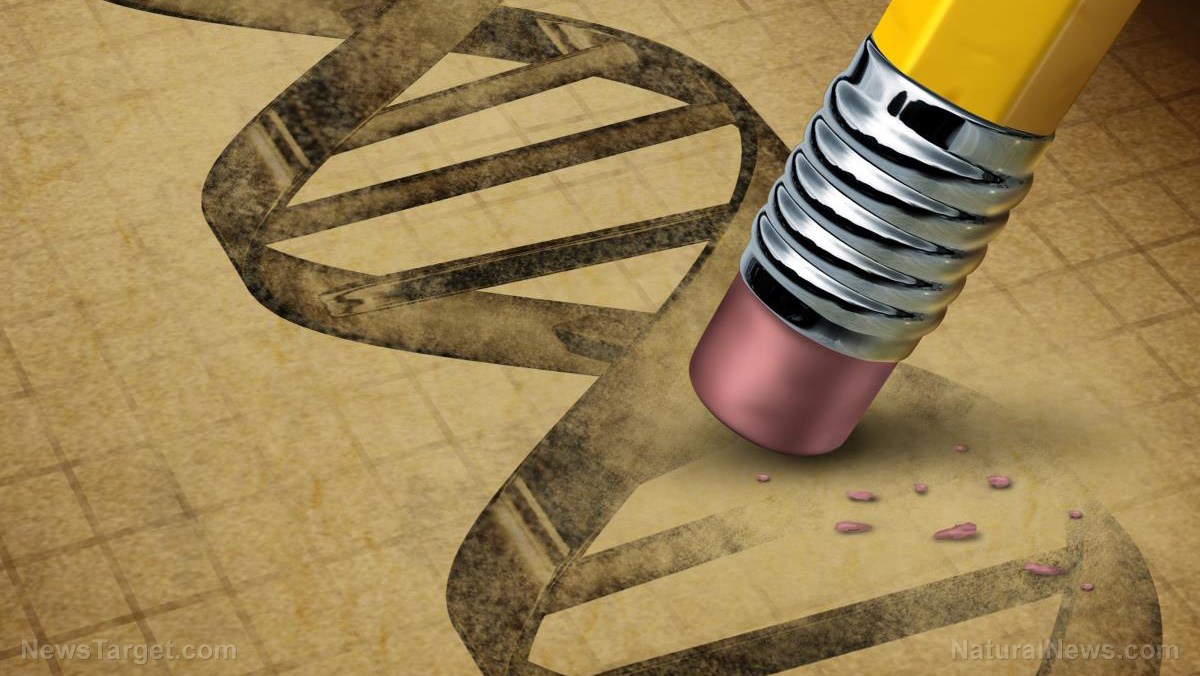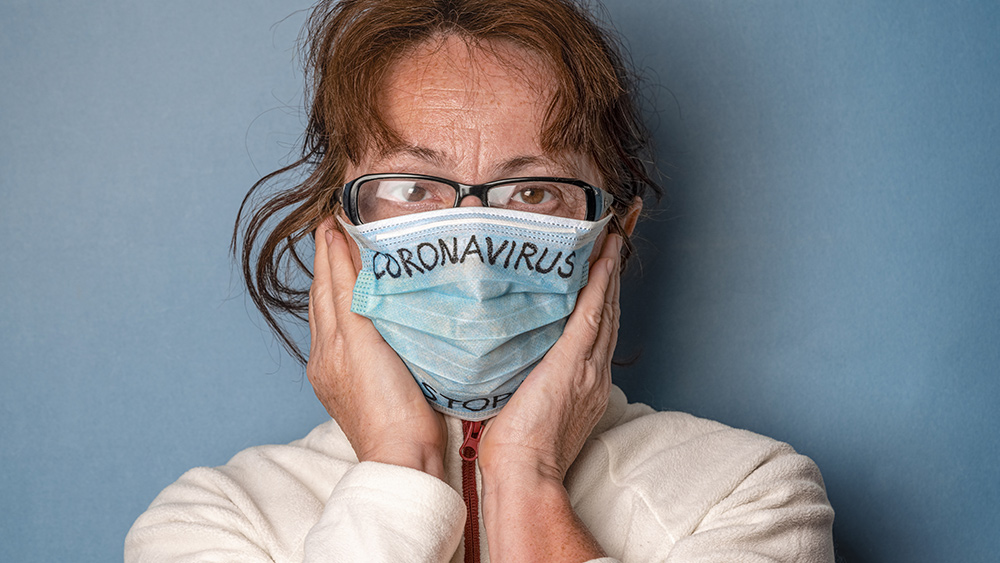Pollutants and contaminants affect food supply from farm to plate
11/02/2022 / By Olivia Cook

Environmental pollutants and contaminants adulterate food and drinking water through various routes from farm to plate and pose serious threats to human health, according to a study published in the Journal of Toxicology.
Some of these occur naturally in the environment (plant toxins), while others are artificially induced by humans (whether intentional or accidental). The different phases of food processing, packaging, transportation and storage are also significant contributors to food contamination. (Related: 4 most dangerous toxins deliberately and secretly infused into our food supply.)
Here are some hazardous adulterants or impurities and their health implications:
Persistent organic pollutants (POPs)
Persistent organic pollutants (POPs) are chemicals of global concern due to their potential for long-range transport, persistence in the environment, ability to bio-magnify and bio-accumulate in ecosystems, as well as their significant negative effects on human health and the environment.
Due to their stability and low decomposition rates, they persist in the environment – resisting degradation or breakdown through natural, physical, chemical or biological processes. They can be transported over long distances through the air and ocean currents. They are pervasive and can accumulate in unhealthy quantities in humans and animals. (Related: Health Ranger science lab tour: How pesticides are tested with liquid chromatography and mass spec instruments.)
The most commonly encountered POPs are:
- DDTs (dichloro-diphenyl-trichloroethane) and other OCPs (organochlorine pesticides) – They have been commonly used in agriculture and vector-disease control for decades and are associated with neurological dysfunctions, endocrine disruption, infertility and fetal malformations.
- Polychlorinated biphenyls (PCBs) – They have a variety of uses in the industry (e.g., heat exchange fluids in transformers, paint additives or plastics) and are associated with neurological disorders and immune and carcinogenic effects. Ingestion of PCB residue-contaminated food, especially meat, fish and poultry may result in neurological disorders, chloracne and immune and carcinogenic effects.
- Dioxins – According to the International POPs Elimination Network (IPEN), waste incineration generates large quantities of dioxins in its residues – particularly in fly ashes. According to the World Health Organization, short-term exposure of humans to high levels of dioxins may result in skin lesions and altered liver function. Long-term exposure, meanwhile, is linked to the impairment of the immune system and the nervous system, as well as endocrine and reproductive functions.
- Chlorpyrifos – It is an organophosphate pesticide widely used in homes and on farms. According to the Agency for Toxic Substances and Disease Registry, “breathing or ingesting chlorpyrifos may result in nervous system effects, ranging from headaches, blurred vision and salivation to seizures, coma and death, depending on the amount and length of exposure.”
Metals and metalloids
An article in Everyday Health identified the common causes of heavy metal poisoning. They are industrial exposure; air or water pollution; foods and medicines; improperly coated food containers, plates and cookware; and ingestion of lead-based paints, insecticides, herbicides and inorganic fertilizers and pesticides. (Related: Food-borne poisons: Diet changes can reduce contamination risk.)
The following metals are the ones most tested for:
- Lead – It is associated with complications in the nervous system and red blood cells; a reduction in cognitive development and intellectual performance; and death among children.
- Cadmium – It is linked to renal tubular dysfunction and is associated with a high risk of lung and breast cancer, osteomalacia and osteoporosis.
- Arsenic – It is associated with dermal, respiratory, nervous, mutagenic and carcinogenic effects.
- Nickel – It is associated with dermal toxicity (causes a local reaction and/or systemic poisoning in people or animals by skin contact), lower body weight and fetotoxicity (increased post-implantation loss and decreased fetal body weight gain) among pregnant women.
- Mercury – It is linked to cardiovascular, reproductive and developmental toxicity, neurotoxicity (alteration of the normal activity of the nervous system that can eventually disrupt or even kill neurons), nephrotoxicity (kidneys are damaged, resulting in possible chronic kidney disease), immunotoxicity (immune system dysfunction) and carcinogenicity.
Natural plant toxins
Researchers have noted that while the risk of potential toxicity due to natural plant toxins is very low, there is always the possibility of undetected contamination in some individuals or adverse effects that develop unpredictably in susceptible individuals.
Examples of natural plant toxins are lectins and ricin.
Lectins are glycoproteins present in leguminous plants like kidney beans, soybeans, lentils, black beans and other grains. Also called hemagglutinins, lectins agglutinate red blood cells and also interfere with nutrient absorption by the intestine.
Ricin, on the other hand, is a natural, highly potent toxin that is a byproduct of processing castor beans to make castor oil. If inhaled, injected or ingested, less than a pinpoint of ricin can kill a person within 36 to 48 hours due to the failure of the respiratory and circulatory systems.
Plastics and Microplastics
According to an article in Food Safety Magazine, ingestion of water contaminated with thermoplastics (plastics that soften on heating and can be molded into different shapes), thermosets (plastics that cannot be molded on heating), chemicals that improve the properties of plastic materials (fillers, plasticizers, colorants, stabilizers and processing aids) and microplastics is the main exposure route for several marine and freshwater species, as well as for humans.
A growing body of evidence points to health risks posed by plastic additives, including endocrine-disrupting chemicals, which are linked to infertility, obesity, diabetes and prostate or breast cancer. Other health conditions linked to additives include reproductive growth, cognitive impairment and neurodevelopment disorders.
According to a study published in the International Journal of Environmental Research and Public Health (IJERPH), inhalation is another microplastic entry point to the human body. Microplastics are carried by the wind or from atmospheric deposits – resulting from the erosion of agricultural and fertilized lands, dried sludges and products from wastewater treatment, synthetic clothes fabrics, industrial emissions and road dust. Depending on the differences in individual metabolism and susceptibility, the response to inhaled particles may include immediate asthma-like reactions, chronic pneumonia and chronic bronchitis.
Nanoparticles
A study published in Critical Reviews in Food Science and Nutrition showed the presence of inorganic micro- and nano-sized contaminants in 40 percent of the bread and biscuits analyzed by means of an environmental scanning electron microscopy. Researchers found that the majority of the foreign bodies (ceramic and metallic debris) were not biodegradable, some are chemically toxic and none of them have any nutritional value.
Visit CleanFoodWatch.com to learn more about pollutants and contaminants in food.
Watch this video about mass contamination of the food supply.
This video is available in the InfoWars channel on Brighteon.com.
More related stories:
Think before you eat: Pesticides and herbicides are hidden in your food.
Why you should choose wild-caught fish over farm-raised fish.
SHOCK: 90% of table salt contains tiny pieces of plastic.
Sources:
Submit a correction >>
Tagged Under:
clean food watch, Dangerous, environment, food safety, food science, food supply, grocery, health science, microplastics, nanoparticles, persistent organic pollutants, plastics, poison, products, toxic chemicals, toxins
This article may contain statements that reflect the opinion of the author





















